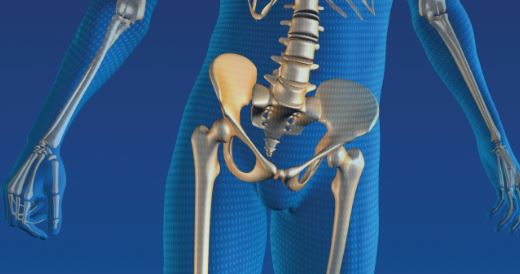The Importance of Rehabilitation after Hip Surgery

Every year, more than 250,000 people experience a hip fracture, the majority being people 65 and over. Hip fractures can reduce future independence and may even shorten one’s life. Within two years of a hip fracture, more than half of men and 40 percent of women are living in a long-term care facility or have died.
Therapy is critical to a positive outcome
Most patients typically remain in the hospital from three to five days. After that, most patients are discharged to a rehabilitation facility before going home. Here, patients receive physical and occupational therapy. Physical therapy includes strength and balance exercises, while occupational therapy focuses on the activities of daily living such as dressing, grooming, bathing.
A recent study showed that the best care is provided by facilities that treat more than 25 patients a year, like Community Physical Therapy. “Facilities that had cared for more than two dozen hip fracture patients in the last 12 months were more than twice as likely to successfully discharge patients in a timely manner compared to facilities that had three or less hip fracture admissions,” according to Pedro Gozalo of Brown University, the study’s lead author.
Thomas Storer, a lecture at Brigham and Women’s Hospital notes that people appear to do better in a professional rehab setting than do-it-yourself rehab at home. Without someone to oversee and motivate, patients have to rely on their own initiative, which may wane because of pain, laziness or getting back into old routines.
Preventing fractures
The good news is there are things you can do to prevent the falls that cause hip fractures in the first place. Here’s just a few:
Exercise
Squats, leg extensions and toe stands can strengthen the legs, providing more support when walking; exercises such as tai chi can help improve balance; and walking can improve strength, balance and endurance. Be sure to check with your physician before starting and exercise routine. If you experience any pain, dizziness or trouble breathing during or after exercise, talk with a doctor, nurse or physical therapist.
Check your medications
One of the side effects of many medications is drowsiness or dizziness, which can increase your chance of falling. Many seniors are overmedicated, which can also cause problems. Review all the medication you’re currently taking with your doctor or pharmacist on a regular basis to see if there are alternate medications you can take and to ensure the drugs you’re taking aren’t causing problematic interactions.
Fall-proof your home
Nearly 50 percent of all falls happen in the home. You can help reduce the risk by taking some steps to make the home safer, including:
- Installing handrails on stairways.
- Installing grab bars in the bathroom near the shower and toilet.
- Putting nonskid flooring throughout the house.
- Removing clutter and making sure frequently used items are within easy reach.
- Put nightlights in hallways, bedrooms and bathrooms.
Talk to your doctor
Finally, talk to your doctor. Have them evaluate your risk of falling, review your medications and make dietary recommendations, which may include more protein, Vitamin D and calcium.
![CPT Rehab [logo]](https://www.cptrehab.com/wp-content/themes/cpt-rehab/images/logo.png)